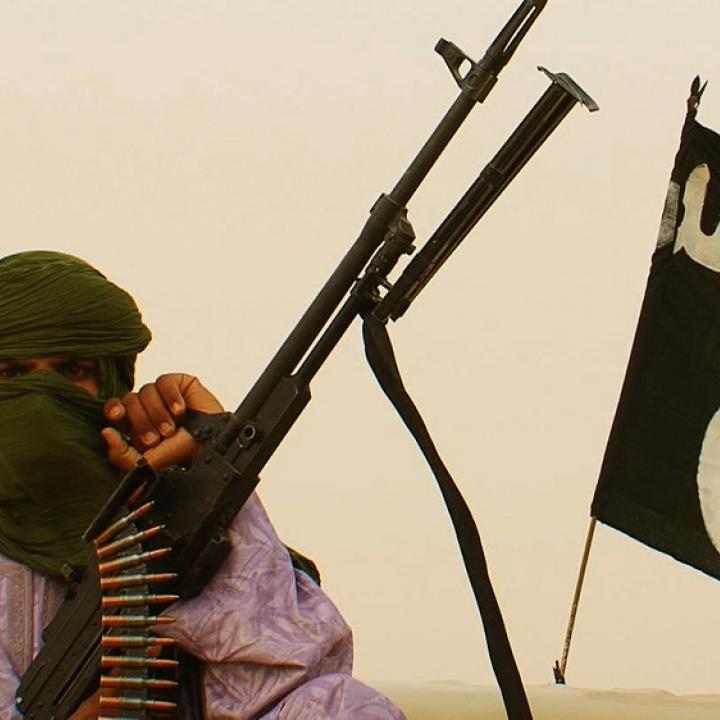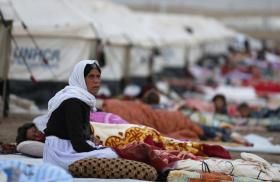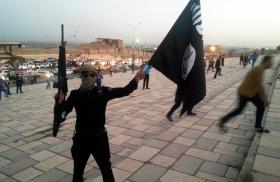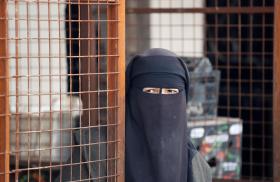
- Policy Analysis
- PolicyWatch 2842
Lone Wolf: Passing Fad or Terror Threat of the Future?

Part of a series: Counterterrorism Lecture Series
or see Part 1: U.S. Efforts against Terrorism Financing: A View from the Private Sector
Watch an international panel of experts discuss the alarming increase in so-called lone wolf terrorism.
On July 31, Boaz Ganor, Bruce Hoffman, Marlene Mazel, and Matthew Levitt addressed a Policy Forum at The Washington Institute. Ganor is the dean and Ronald Lauder Chair for Counter-Terrorism at the Lauder School of Government, Diplomacy, and Strategy, as well as the founder and executive director of the International Institute for Counter-Terrorism at IDC Herzliya in Israel. Hoffman is currently director of both the Center for Security Studies and the Security Studies Program at Georgetown University's Edmund A. Walsh School of Foreign Service. Mazel is an adjunct scholar at The Washington Institute, on leave from her position as director of the Counter-Terrorism Litigation Division in the Israeli Ministry of Justice. Levitt is the Fromer-Wexler Fellow and director of the Institute's Stein Program on Counterterrorism and Intelligence.
Boaz Ganor
A lone wolf is an individual who has become radicalized and, as a result, decides to carry out an act of terrorism. Many scholars have challenged the validity of the term, questioning whether lone wolves, or "personal initiative attackers," are indeed acting on their own. Yet while the lone wolf may be ideologically inspired by a terrorist organization, he or she receives no operational or other support from such an organization and, thus, is indeed acting alone.
Although not a threat to be taken lightly, lone wolf attacks -- typically perpetrated with light weaponry such as knives, axes, or bulldozers -- generally result in low casualty numbers. Given that lone wolf attacks are a growing phenomenon, however, and that terrorists are always looking for new techniques, counterterrorism professionals must not underestimate the danger they pose to the public.
To prevent lone wolf attacks, officials must understand the reasoning behind them. First and foremost, terrorists are rational actors who weigh the costs and benefits of engaging in terrorism. Indeed, determining the motives of lone wolves can be difficult, given that they differ from person to person. One universally shared "benefit," though, appears to be feelings of honor and satisfaction.
In order to accrue honor and praise for carrying out a lone wolf attack, perpetrators oftentimes post their intentions on social media before striking. Such exposure offers an opportunity for intelligence analysts to cooperate with social media outlets and collect open-source information before attacks occur. Furthermore, experts should create mechanisms to identify radical messages online and develop big data capabilities to monitor and control the discourse. Some such efforts are no doubt already under way, but additional work must be done to learn how this data can best be utilized to stop attacks.
Bruce Hoffman
The lone wolf model of terrorism is not new. In 2001, the deputy leader of al-Qaeda, Ayman al-Zawahiri, called for individuals to attack Jews and Americans with knives, Molotov cocktails, or other homemade devices. But only since the rise of the Islamic State (IS) has the lone wolf phenomenon entered the mainstream as a terrorism model.
IS has used social media to reach a wide audience and encourage lone wolf attacks. Unlike the experienced terrorists who executed the September 11 attacks, the Islamic State's lone wolf model provides an opportunity for anyone to participate in terrorism. In particular, IS has made terrorism more accessible by providing guidance on how, where, and when to carry out an attack, often manipulating vulnerable individuals to act.
The lone wolf model poses a new challenge for law enforcement and counterterrorism professionals. Unlike strikes by formalized terrorist groups, lone wolf attacks are much harder to predict and individuals typically leave no trails that authorities can track. And although lone wolf attacks are less violent than other forms of terrorism, the sheer number of lone wolf threats may overwhelm and distract intelligence and law enforcement authorities.
In 2015, French authorities were thus tracking a huge number of individuals, and they lost sight of the larger and more lethal terrorist plots that were later carried out in Paris that November. This demonstrates why it is critical that law enforcement and counterterrorism experts pay serious attention to a wide range of threats, in particular large-scale plots, and not become too consumed with tracking potential lone wolves.
Marlene Mazel
Israel, like Europe, has experienced an increase in lone wolf attacks over the past few years. These attacks appear to be perpetrated mainly by Palestinian youth who are not affiliated with or trained by any terrorist organizations.
Questions thus arise regarding why more Palestinian youth are engaging in terrorism; what underlying conditions stir them to perpetrate such violence; whether the Palestinian leadership, including the Palestinian Authority (PA), has engaged in incitement through glorification of specific acts; what effect, if any, such potential incitement has had on future attackers; and what corresponding lessons can be drawn about radicalization and lone wolves.
In a study focused specifically on Palestinian lone wolf attacks carried out between October 2015 and September 2016, findings showed 105 attacks carried out by youth, using knives (the most common weapon), guns, or explosive devices. Approximately 60 percent of the attackers were sixteen or seventeen years old, while the remaining 40 percent were younger.
The study, which drew on the attackers' names as reported in public databases, indeed showed institutional incitement by the PA and the Palestinian leadership, including through the posting of official flyers praising the youth as martyrs, complete with the Fatah imprimatur and pictures of the late Palestinian leader Yasser Arafat; statements that implicitly endorse the terrorist acts; public visits to the families of killed terrorists, generating broad media coverage; and formal military funerals extolling the acts.
The data thus far also suggests a possible correlation between institutional incitement and the frequency of terrorist attacks. During the peak period of stabbings, October 2015 through March 2016, PA institutional glorification was at its highest level. From April 2016 through September 2016, the preliminary data suggests a decrease in such institutional glorification, paralleling a drop in stabbings. PA incitement may thus have contributed to the general inflammatory environment -- but questions remain on the ways in which such incitement may shape the views, behaviors, and actions of youth. Also, these trends could well have been affected by other environmental factors, and further research is needed to understand the correlation between specific acts of terrorism and specific cases of Palestinian institutional incitement.
Even though the results from the study discussed here are preliminary -- and the study itself is still in process -- one can clearly deduce the critical need to understand and eliminate all incentives for youth to commit terrorist attacks. Reducing official glorification of such acts, along with payments to attackers' families, is essential. Furthermore, if Palestinian youth can be dissuaded from engaging in terrorism, as this study suggests, the Palestinian government, educators, and media must stop all forms of institutional incitement and, rather, send unified and consistent messages unequivocally condemning all acts of terrorism.
Matthew Levitt
In the past, "lone wolf" has been a misnomer. Men and women considered lone wolves were known to law enforcement, and even if they were not acting under the direction of a terrorist organization, they were nonetheless connected to a group in some capacity, if only by ideology. Now, however, the Islamic State seeks to project power and influence beyond its territorial borders and infiltrate the West even as its official "caliphate" is in decline. Many individuals in the West have been, and will continue to be, inspired to act in the name of the Islamic State. Therefore, the "lone offender" phenomenon is very real.
IS has successfully recruited lone offenders in large part owing to its strong presence on social media. This past month, the jihadist group released an e-book in Turkish with instructions for conducting attacks alone. Additionally, the ninth volume of the IS periodical Rumiyah, published in May, contained details on the ideal weapons and targets for lone wolf attacks.
Given the rising threat of individual attacks from both IS and al-Qaeda, officials must consider the most effective methods for countering IS propaganda and addressing radicalization. Google, for example, has made efforts to provide countermessaging for certain searches and continues to extensively research how to effectively subvert radical messages online. While in some instances social media can be a resource for law enforcement to predict attacks, not all lone wolves post their intentions online in advance. Additionally, in a country as large as the United States, authorities often face challenges in detecting and responding to such warnings in a timely manner.
As well as on the Internet, countering violent extremism (CVE) must take place in communities. Although every case of radicalization has its own nuances, using a public health model enables community members, such as religious leaders, to be involved in deradicalization efforts and to identify models and messages that best address the needs of their respective communities. These CVE efforts are not meant to replace law enforcement or intelligence professionals but rather to work in tandem with them.
This summary was prepared by Aviva Weinstein.







